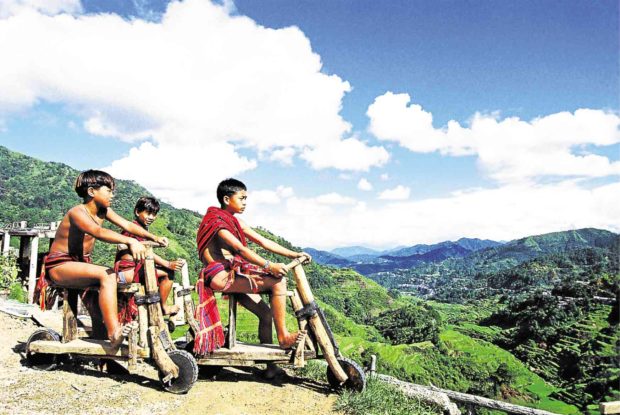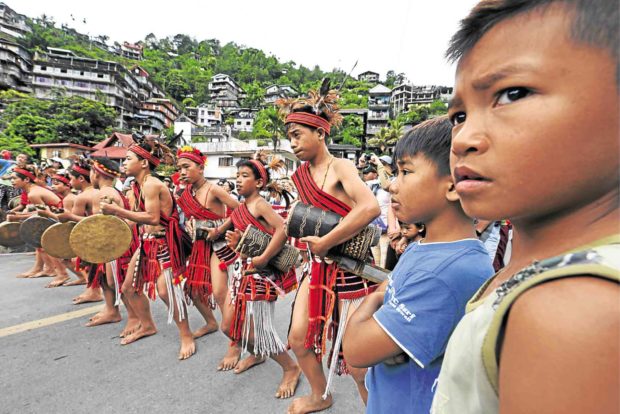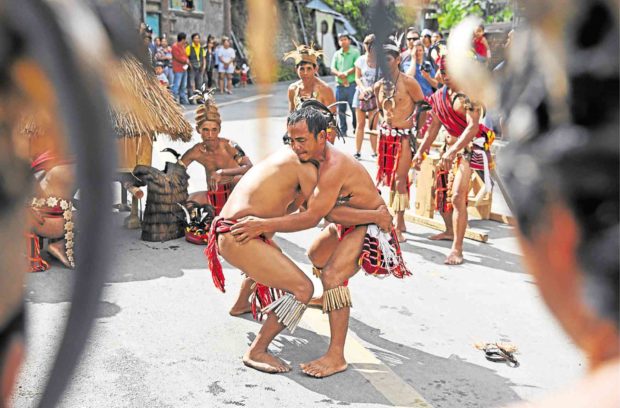Celebrating Ifugao culture

IFUGAO RIDE Wooden scooters, which families in Banaue town use to haul firewood and crops, also represent the ingenuity of the people who built the Ifugao rice terraces. —PHOTOS BY EV ESPIRITU
BANAUE, Ifugao — “Imbayah” was once a lavish rite of passage in this home of the world-renowned rice terraces. It used to mark the elevation of a commoner and his family to the “kadangyan” (nobility).
But in December 1979, Imbayah referred to a celebration by the Ifugao of their culture and how they fought to preserve a lifestyle slowly being overshadowed by modern ways.
Coming from the root word “baya” (rice wine), Imbayah of the olden days was a feast for the gods, always overflowing with wine aged in heritage jars, and filled with the chanting of the “hudhud” (epic), while community members danced.

“Imbayah,” once a rite of passage for Ifugao families joining the “kadangyan” (nobility) ranks, has turned into a celebration of local culture.
It was a lavish display of wealth and power for the “bumoyah” (celebrant) to be accepted by the community.
These days, Imbayah serves as a means to propagate Ifugao culture and traditions through parades, reenactment of rites and rituals and ethnic games.
Artisan culture
While the Ifugao rice culture draws most of the attention because of the terraces, Imbayah casts more light on the artisan culture that has grown around the terraces.
Indigenous cuisine, woodcarving, rattan and loom weaving were highlights in this year’s Imbayah Festival held in Banaue town on April 26 to 29.
Games were also added, including marathon and volleyball, played by men in G-string.
The festival owes much to the late photographer, John Chua, who had documented Banaue’s growth since 1970. He died from colon cancer in January.
His widow, Harvey, said her husband wanted to revive the ancient Ifugao games, after spending almost a decade immersing himself in Banaue for his exhibits.
Settling disputes
Ifugao games, Chua learned, helped settle disputes or prove the guilt of erring community members. Quarreling families would send their strongest men and settle disputes through “bultong” (wrestling).
The first Imbayah Festival in 1979 was a three-day affair where the ancient games were revived and played at the town plaza in Poblacion.
Delegations from each village paraded in their ethnic attire and performed traditional dances, before competing in bultong, “guyyuchan” (tug-of-war), “tulhi” (finger wrestling), “kak-kaet” (a game which literally means human rooster), and “bangngunan” (leg wrestling).
During the second festival in 1983, the plaza was turned into a public cinema as cartoons and movies were shown on a large screen.
The festival has since been held every three years.

